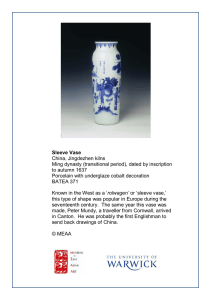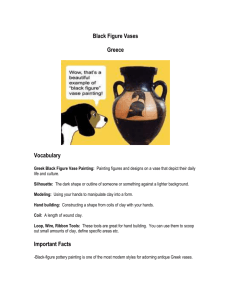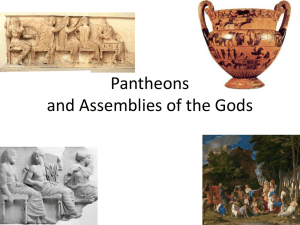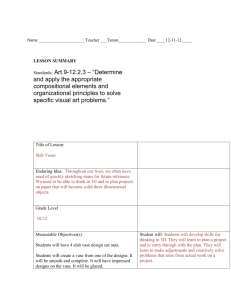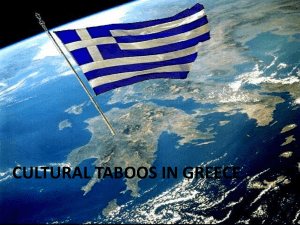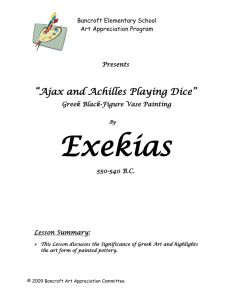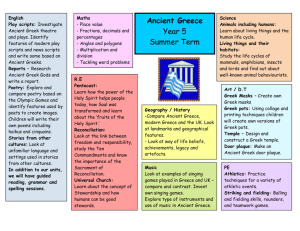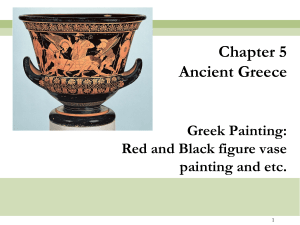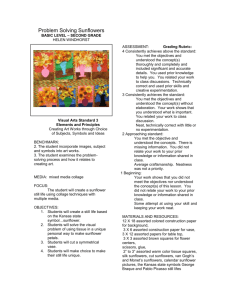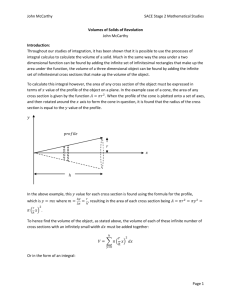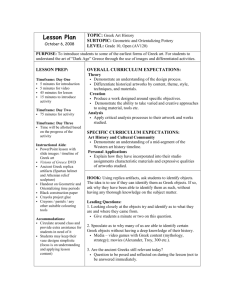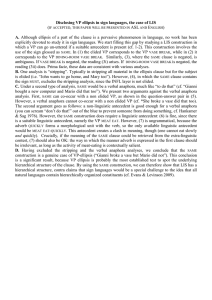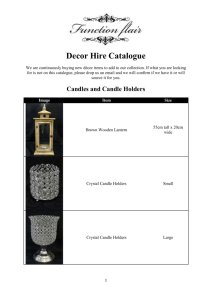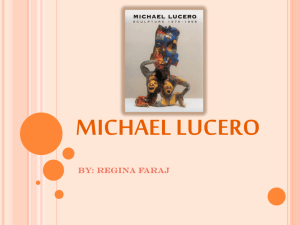Olpe
advertisement
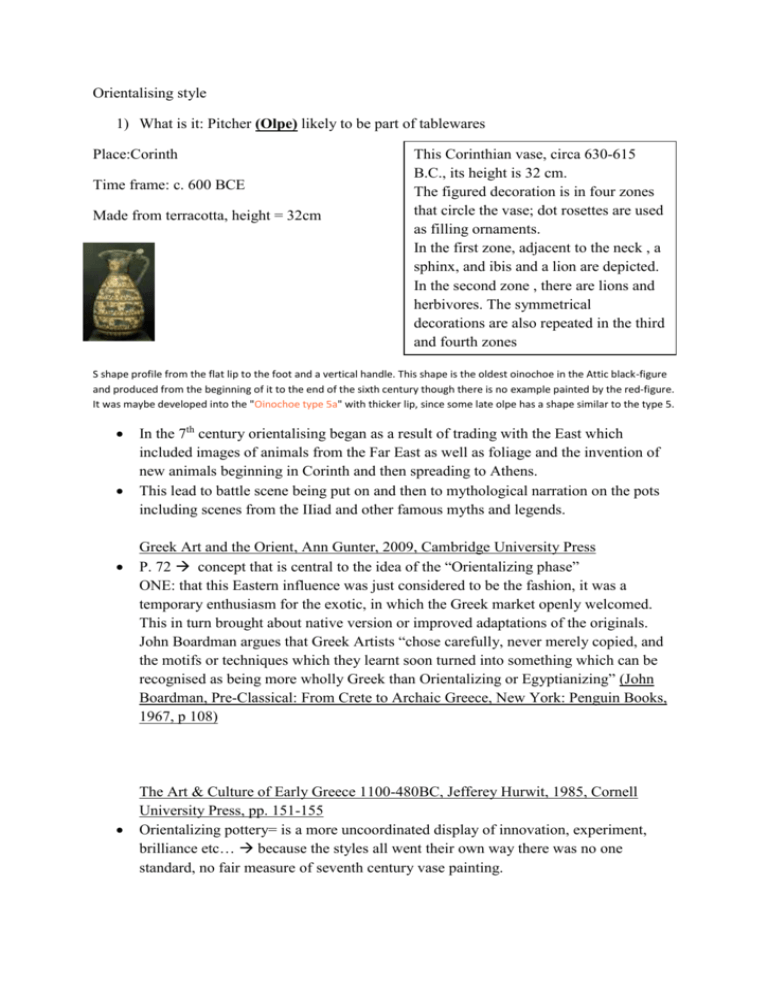
Orientalising style 1) What is it: Pitcher (Olpe) likely to be part of tablewares Place:Corinth Time frame: c. 600 BCE Made from terracotta, height = 32cm This Corinthian vase, circa 630-615 B.C., its height is 32 cm. The figured decoration is in four zones that circle the vase; dot rosettes are used as filling ornaments. In the first zone, adjacent to the neck , a sphinx, and ibis and a lion are depicted. In the second zone , there are lions and herbivores. The symmetrical decorations are also repeated in the third and fourth zones S shape profile from the flat lip to the foot and a vertical handle. This shape is the oldest oinochoe in the Attic black-figure and produced from the beginning of it to the end of the sixth century though there is no example painted by the red-figure. It was maybe developed into the "Oinochoe type 5a" with thicker lip, since some late olpe has a shape similar to the type 5. In the 7th century orientalising began as a result of trading with the East which included images of animals from the Far East as well as foliage and the invention of new animals beginning in Corinth and then spreading to Athens. This lead to battle scene being put on and then to mythological narration on the pots including scenes from the IIiad and other famous myths and legends. Greek Art and the Orient, Ann Gunter, 2009, Cambridge University Press P. 72 concept that is central to the idea of the “Orientalizing phase” ONE: that this Eastern influence was just considered to be the fashion, it was a temporary enthusiasm for the exotic, in which the Greek market openly welcomed. This in turn brought about native version or improved adaptations of the originals. John Boardman argues that Greek Artists “chose carefully, never merely copied, and the motifs or techniques which they learnt soon turned into something which can be recognised as being more wholly Greek than Orientalizing or Egyptianizing” (John Boardman, Pre-Classical: From Crete to Archaic Greece, New York: Penguin Books, 1967, p 108) The Art & Culture of Early Greece 1100-480BC, Jefferey Hurwit, 1985, Cornell University Press, pp. 151-155 Orientalizing pottery= is a more uncoordinated display of innovation, experiment, brilliance etc… because the styles all went their own way there was no one standard, no fair measure of seventh century vase painting. Protocorinthian pottery was by far the most commercially successful style of the time and was often imitated Most Greeks of the 7th century liked animal friezes- they were “fashionably” eastern as well as visually soothing. Corinth’s vase painters were the finest craftsmen of the period, and had to be, since they decorated the period’s smallest vase. The Protocorinthian artist invented a new technique which was particuly suited to the precise rendering of minute detail: black figure. the artist painted a black silhouette and then used a sharp point to scrape away filaments of glaze, leaving fine engravements of ornamental details on the vase…. SHOWS PROGRESSION OF SKIILS, DEVELOPMENT WITHIN SOCIETY. Floral patterns fill subsidiary zones or are strewn about among the animals, but the animals are the main focus of the style. Books for Bib: Boardman, John, Pre-Classical: From Crete to Archaic Greece, (New York: Penguin Books, 1967) Gunter, Ann, Greek Art and the Orient, (Cambridge University Press, 2009) Hurwit, Jefferey, The Art & Culture of Early Greece 1100-480BC, (Cornell University Press, 1985) Richter, Gisela, & Milne, Marjorie, Shapes and Names of Athenian Vases, (Metropolitan Museum of art, New York, 1935)
